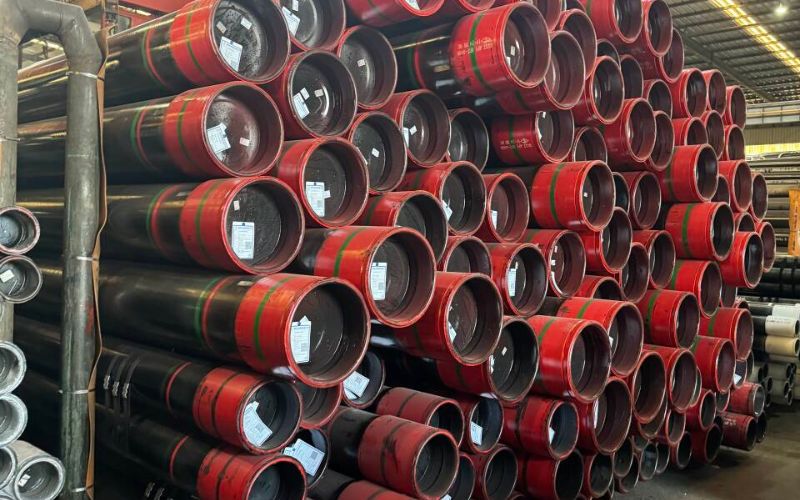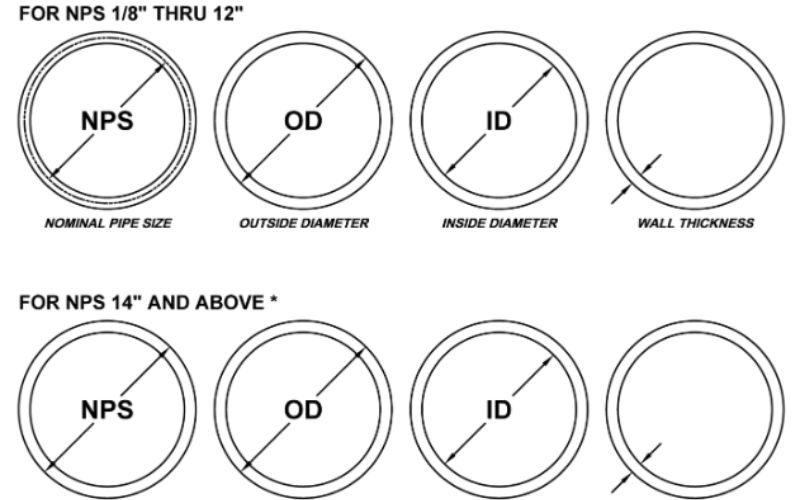Pipelines are not merely channels for the passage of liquids; they are indispensable parts of various industries, including construction, plumbing, manufacturing, and others. Among the different types of pipes available, Schedule 40 ones are, so to speak, the hallmark of standard, and they are embraced for their strength, dependability, and versatility. However, what is so special about Schedule 40 pipes, and why are they such a widely used option? The article will dissect the characteristics, sizes, and frequent uses of Schedule 40 pipes, equipping you with the correct information to make decisions for your projects. Whether you are a licensed builder, a home improvement enthusiast, or simply interested in the topic, this reference will guide you in learning and effectively applying Schedule 40 pipes.
Introduction to Schedule 40 Pipe
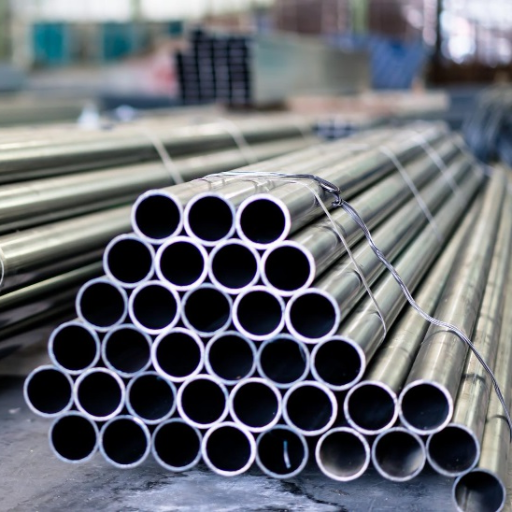
Schedule 40 pipe is a popular standard piping option mainly because of its balance of strength, durability, and cost-effectiveness. Usually, it is made from PVC, steel, or stainless steel, and it has a standardized wall thickness suitable for many uses, such as plumbing, irrigation, and industrial applications. The term “Schedule 40” indicates the thickness and pressure rating of the pipe, thus it is versatile enough to be used for both residential and commercial projects. Its broad availability and compatibility with different fittings ensure it is a dependable choice for experts and home projects, too.
What is Schedule 40 Pipe?
Schedule 40 pipe is a standard pipe type characterized by its wall thickness and pressure rating, as approved by the American National Standards Institute (ANSI). It is manufactured from diverse materials such as PVC, steel, and stainless steel, thereby making it usable in many different fields. Schedule 40 pipe finds its main application in plumbing, irrigation, drainage, and industrial projects. Its moderate pressure tolerance means it is ideally suited for both house and commercial water supply systems. The latest information suggests that the main advantage of Schedule 40 pipe is its durability and low cost, allowing its use in various applications. This pipe type is also very much fitting with different fittings and can be cut or modified easily to fit exact project needs.
Importance of Schedule in Pipe Specifications
The pipe “schedule” is a term that indicates the wall thickness and is a very important factor in determining the pipe’s pressure rating and strength. The ability of the pipe to bear the internal and external forces is significantly affected by this factor. For instance, higher schedule numbers like Schedule 80 or Schedule 160 indicate thicker walls suitable for high-pressure applications. In contrast, Schedule 40 is sufficient for the pressure in residential and commercial areas where the pressure is not very high. One must know the pipe schedules very well to ensure the proper pipe type is chosen according to the system’s needs. This way, one can prevent failures, save costs, and make the best use of it. Moreover, it is essential to select the proper pipe schedule in relation with fittings and components so that the system compatibility and safety can be maintained.
Applications of Schedule 40 Pipe
- Residential Plumbing Systems: It is the most common material used for pipes in houses because of its strength and capacity to cope with general water pressure.
- Irrigation Systems: Water is distributed effectively to fields and gardens using this material or its system.
- Vent Piping: It is a common choice for pipes in drainage and venting systems both in the home and in factories.
- HVAC Systems: It acts as the duct for the air flow in the heating, ventilation, and cooling systems.
- Pool and Spa Plumbing: These systems are responsible for the transport of water in swimming pools and thus playing an essential role in the filtration and circulation processes.
Specifications of Schedule 40 Pipe
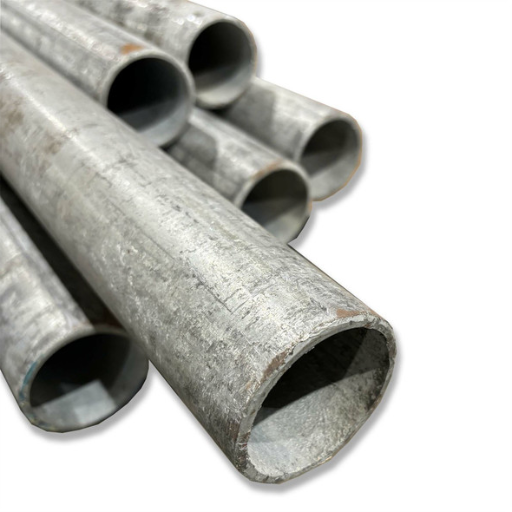
The wall thickness of Schedule 40 pipe is standardized, which makes it applicable for various applications. The specifications say that the pipe can be used with many materials like PVC, CPVC, and metal. It comes in multiple sizes, including different diameters and lengths, to fit the specific requirements of the systems. The strength, durability, and resistance to corrosion of Schedule 40 pipes are excellent, allowing them to be used in high-pressure or high-temperature applications. Moreover, Schedule 40 pipe is compliant with industry standards, which in turn assures dependability and simplifies the installation process.
ANSI and ASME Standards
The Schedule 40 pipe is highly regulated and is required to comply with ANSI (American National Standards Institute) and ASME (American Society of Mechanical Engineers) standards which offer nothing but the best quality and dependability to the other pipes in the same and residential sectors. The mentioned standards set the same criteria for the pipes in terms of their dimensions, pressure ratings, and materials. The pipe dimensions, tolerances, and other factors are defined in ANSI standards which include ANSI B36.10 and ANSI B36.19, while the ASME standards such as ASME B31.1 and ASME B31.3 cover the pipe systems’ design and application. Thus, the process of manufacturing Schedule 40 pipe is such that there is constant monitoring and adherence to the prescribed conditions which result in a safe and reliable pipe. This is why it is extensively used for fluid transportation in plumbing, industrial systems, or even at high-stress spots.
Nominal Pipe Size (NPS) Explained
Nominal Pipe Size (NPS) is a coding dimension system that is very useful when talking about pipe diameters. Even though it’s called that way, the NPS value is not the same as the pipe’s actual diameter measured. It gives a way to compare pipes of different sizes consistently, taking not only the diameter but also the thickness of the pipe into account. When the pipe’s nominal size is NPS 14 or larger, the NPS number usually corresponds to the actual outside diameter measured in inches. In the case of smaller pipes, the relationship is different and depends on the schedule (which indicates the thickness of the wall). It is crucial to be familiar with NPS when selecting the right pipe for specific uses, as it ensures the pipes fit with the fittings and support the system’s proper functioning.
Wall Thickness and Dimensions
Schedule 40 is among the pipe schedules that are most widely adopted because its properties, strength, and cost are in perfect proportion. The word “schedule” indicates the pipe’s wall thickness in relation to the diameter, which directly determines the pipe’s pressure capacity. The wall thickness of Schedule 40 pipes is determined by the nominal pipe size (NPS). To illustrate, a 1-inch NPS Schedule 40 pipe has a wall thickness of roughly 0.133 inches, while a 10-inch NPS Schedule 40 pipe is around 0.365 inches thick.
One thing that should be highlighted is that the wall thickness does not increase in proportion to the pipe diameter. Thus, larger pipes may seem thinner in comparison to their size when measured against smaller pipes. Knowing these dimensions is very important for fluid dynamics calculations, system compatibility, or making sure safety standards are in place for installations.
Types of Schedule 40 Pipe
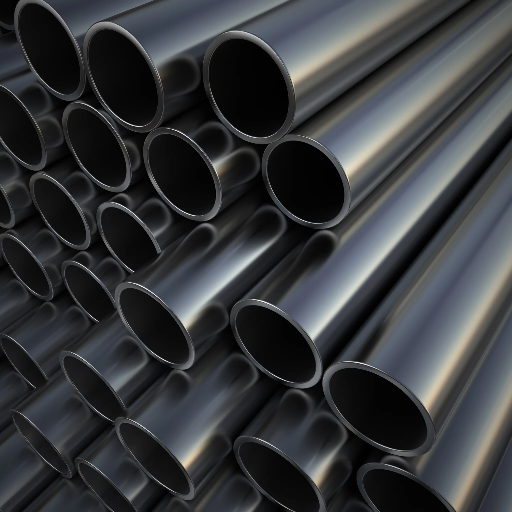
Schedule 40 pipes are available in a variety of types including PVC, CPVC, stainless steel, carbon steel, and galvanized steel.
| Type | Material | Max Temp | Durable | Corrosion | Uses |
|---|---|---|---|---|---|
| PVC | Plastic | 140°F | High | Moderate | Plumbing, DWV |
| CPVC | Plastic | 200°F | High | Moderate | Hot water |
| Stainless | Metal | 1500°F | Very High | Very High | Industry, Gas |
| Carbon | Metal | 800°F | Very High | Low | High-pressure |
| Galvanized | Coated Metal | 392°F | High | High | Water, Outdoor |
PVC Schedule 40 Pipe
PVC Schedule 40 pipe is a very versatile piping solution that has gained popularity mainly because of its durability and low cost. Though primarily intended for cold water systems, this pipe can tolerate a temperature of 140°F, which makes it suitable for plumbing, irrigation, and drainage applications. The pipe’s resistance to corrosion and chemical damage, along with its lightweight property, makes it easy to install by anyone. In fact, the pipe is ideal for such environments and will last throughout the installation period. Nonetheless, it is not recommended for areas with high heat or high-pressure conditions because of its temperature limits.
Schedule 40 Steel Pipe
Schedule 40 steel pipe is a standard that finds a wide variety of applications in the building and industrial sectors, thanks to its strength and versatility. This type of pipe, made of either carbon steel or galvanized steel, has a specific wall thickness that ensures both durability and resistance to the pressure of the substances flowing through it. Its application ranges from water supply systems to gas pipes and even in buildings as a part of the structure. The steel used in its construction allows the pipe to operate at higher pressures and temperatures than PVC pipes, making it suitable for the most demanding environments. Besides, Schedule 40 steel pipe is a regular choice for both home and business use due to its good performance and wide availability. Nevertheless, because it is heavy and prone to rust if untreated, users usually prefer galvanizing or coating that are meant to prolong the service life of the product.
Carbon Steel Schedule 40 Pipe
Carbon Steel Schedule 40 pipes enjoy extensive use due to their strong, long-lasting, and multipurpose nature. They can handle several uses, such as water transfer, gas pipes, and even camping. They will always be the best option where moderate pressure and temperature are involved. The pipes are usually treated with coatings or galvanizing to prevent corrosion, which works well to increase their life and also cut down on maintenance. Besides being available in several sizes, their low prices have made these pipes the preferred choice for not only large-scale industrial operations but also small domestic projects.
Schedule 40 Pipe Size and Weight
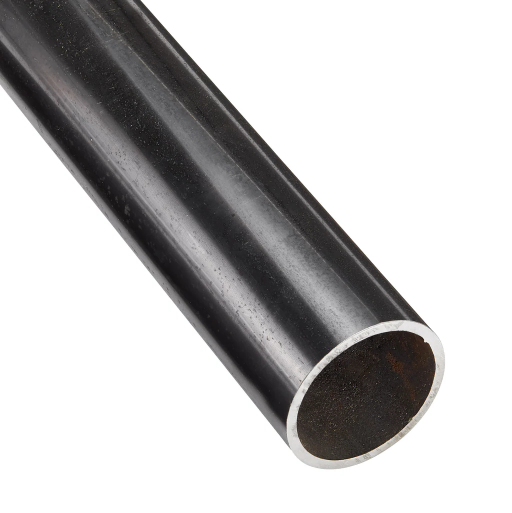
The nominal size and wall thickness of Schedule 40 pipes determine their standardization. Their material and dimensions determine the pipes’ weight, and they vary by weight. A Schedule 40 steel pipe with a 1-inch diameter usually weighs 2.27 pounds per foot, while a 6-inch pipe, which is a larger size, can weigh 54.74 pounds per foot. This information about the weight of the pipes is crucial for load capacity calculations and safe handling practices during installation.
Pipe Size Chart for Schedule 40
Below is a comprehensive chart showcasing the diameters, wall thicknesses, and corresponding weights per foot for Schedule 40 pipes. This information is essential for professionals in construction, plumbing, or engineering fields:
| Nominal Pipe Size (inches) | Outside Diameter (inches) | Wall Thickness (inches) | Weight Per Foot (lbs) |
|---|---|---|---|
| 1 | 1.315 | 0.133 | 2.27 |
| 2 | 2.375 | 0.154 | 3.65 |
| 4 | 4.500 | 0.237 | 10.79 |
| 6 | 6.625 | 0.280 | 18.97 |
| 8 | 8.625 | 0.322 | 28.55 |
This chart provides a quick reference for standard pipe sizes and helps ensure precision and efficiency during project planning and execution. Matching the correct pipe specifications to project requirements promotes optimal safety and functionality.
Pipe Schedule and Its Importance
Pipe schedule denotes the wall thickness of a pipe, which in turn influences its strength and pressure tolerance. It is essential to know pipe schedules to ensure the chosen pipe can handle the pressure and conditions of a project. Each schedule indicates a particular wall thickness for a specific nominal pipe size, with 40, 80, and 160 being the most common ones. Choosing the right pipe schedule helps avoid failures, ensure safety, and comply with engineering standards in various sectors like construction, plumbing, and manufacturing.
Applications and Usage of Schedule 40 Pipe
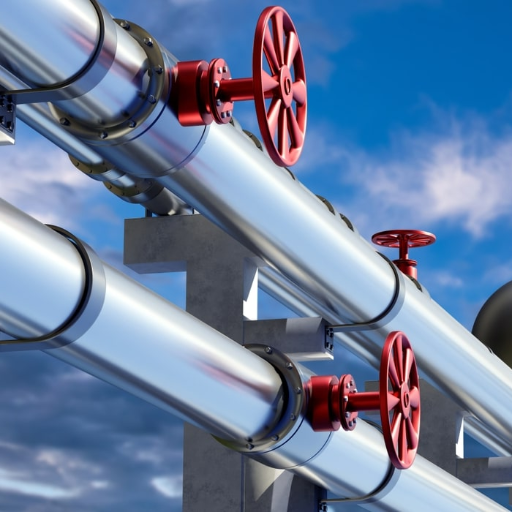
The pipe with a Schedule 40 rating is the most preferred one because of its good combination of strength, versatility, and cost efficiency. Its most common uses are in residential and commercial plumbing, water distribution systems, irrigation, and industrial piping. It can carry liquids and gases under moderate pressure and is often used in constructing fences and supporting structures. The different materials that Schedule 40 pipe comes in, such as PVC and steel, make it even more adaptable to various industries.
Common Industries Utilizing Schedule 40 Pipe
- Construction Industry: Among the various applications of the metal, the primary ones are structural supports, scaffolding, and plumbing systems for residential and commercial buildings.
- Agriculture: Its application is seen in irrigation systems, greenhouse structures, and water transportation.
- Manufacturing: The metal is used in industrial piping for transporting liquids and gases in manufacturing facilities.
- Oil and Gas: It is utilized for transporting the product, conducting drilling activities, and building support structures.
- Water Treatment: In-water treatment and distribution systems, filtration, and sewage management the metal is irreplaceable.
Installation Guidelines for Schedule 40 Steel Pipe
📋 Step-by-Step Installation Process
- Preparation: Before the installation begins, be certain that all tools and materials are prepared and available. Cutting tools, threading equipment, pipe wrenches, sealants, and measuring devices are all included in this. Verify the pipes are defect-free and clear of dirt or other substances.
- Cutting and Threading: Ensure the use of right cutting tools that will not just isolate pipe parts but also create lips and edges that will bond well. Also, if the pipes are threaded, ensure the connection is smooth and precise to avoid leaks when the pipes are in use.
- Fitting and Alignment: Pipes should be fitted to the connectors with extreme care to allow unrestricted flow and proper pressure throughout the system. Wrong adjustments can cause the machine to work inefficiently or to be damaged.
- Sealing: It is vital to apply the correct sealant or tape on the pipes to provide a water and gas-tight joint in the threaded area. The application should be consistent and complete to prevent any leakage.
- Securing: Support the pipes with pipe clamps, brackets, or other methods. This is crucial to avoid any pulling action on joints and to maintain stability of the entire system while it is running.
- Testing and Inspection: After the fitting and sealing process, pressure testing and inspection should be carried out to detect leaks and weak points. Solve all problems immediately and then starts full operation of the system.
- Maintenance Practices: Plan for regular checks and maintenance to monitor the pipes’ strength during their life cycle. This not only ensures consistent performance but also prolongs the installation’s service life.
Maintenance Considerations for Schedule 40 Pipe
For Schedule 40 pipe maintenance, my primary concern is to conduct periodic inspections and to look for corrosion, wear, or mechanical damage. Regularly, I clear and clean up any debris or accumulation to maintain optimal flow and avoid blockages. I take immediate action on weak spots like cracks and leaks to prevent further damage. Moreover, I adhere to the manufacturer’s instructions on pressure limits and operating conditions to maintain the pipe’s integrity for a more extended period.
📚 Reference Sources
-
Schedule 40 Pipe – an Overview (ScienceDirect)
- Provides a detailed explanation of schedule 40 pipe, including its dimensions, wall thickness, and common engineering applications.
-
What is Schedule 40 Steel Pipe? (Kloeckner Metals)
- Offers an introduction to schedule 40 steel pipe, explaining its nominal wall thickness and its use in various industries.
-
Steel Pipes Chart Schedule 40 (Pipe Flow Calculations)
- Provides a comprehensive chart for calculating the weight and dimensions of schedule 40 steel pipes, useful for engineering and design purposes.
- Black Steel Pipe Supplier In China
- Guide for Schedule 40 Black Pipe
Frequently Asked Questions (FAQs)
❓ What is Schedule 40 Pipe?
Schedule 40 pipe is basically a carbon steel pipe, which is also called sch 40, and is an ASTM certified product. One of its major specifications is the pipe’s wall thickness, which, according to standards, is determined by the pipe’s diameter, making it a good all-around choice for various installations.
❓ What Are the Dimensions of Schedule 40 Steel Pipes?
The dimensions of schedule 40 steel pipes are dependent on the nominal pipe size (NPS). To illustrate, the outer diameter and schedule 40 pipes thickness are governed by the standard weight classifications. A complete support 40 pipe size chart can guide you in deciding the specific dimensions that are appropriate for your application.
❓ What is the Schedule 40 Pipe Pressure Rating?
The pressure ratings of Schedule 40 pipes are determined by their size and material. They can be considered to a great extent the same as schedule 40 pipes because they can withstand 1 yet still be in the range of moderate pressure application which the pipe’s weight is 5-10 times less than that of stronger pipes. So, if your process requires higher pressures, then, schedule 80 and xxs pipes with greater wall thickness and strength should be your consideration.
❓ Can Schedule 40 Steel Pipes Be Used in Chemical Processing?
Certainly, schedule 40 steel pipes can be applied in chemical processing as long as zinc coating or hot-dip galvanization is done. The latter gives the former stronger corrosion resistance making them ideal for the transportation of corrosive substances.
❓ What is the Weight of Schedule 40 Steel Pipes?
The diameter, size, and wall thickness determine the weight of schedule 40 steel pipes. As an illustration, a NPS 10 schedule 40 pipe weighs around 1.68 lbs per foot. Thus, knowing the weight of schedule 40 steel pipes is an essential factor to consider when planning for transportation and installation.
❓ What Are the Applications of Schedule 40 Pipe?
Schedule 40 pipe has found its way into various areas such as low water pressure applications, household plumbing, and industrial piping systems. Its strength and durability for gas and water transport make it suitable even for those requiring strict conditions.
This comprehensive guide covers all essential aspects of Schedule 40 pipe specifications, applications, and installation guidelines.



